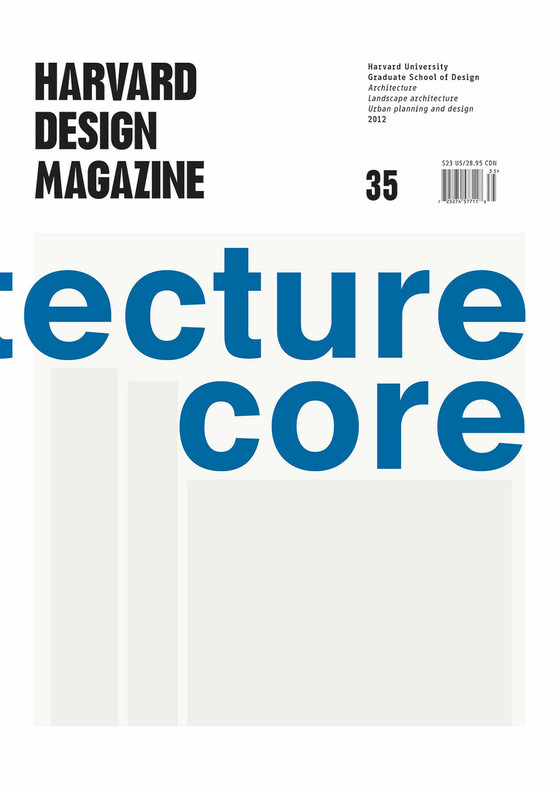30 St. Mary Axe
35: Architecture’s Core?

This and the next two issues of Harvard Design Magazine will focus more specifically on disciplinary themes. It is of course the knowledge of specific single disciplines that defines and fuels transdisciplinary practices. We cannot speak of cross-fertilization between architecture and landscape architecture, for example, unless we under-stand and possess the know-how, creativity, and convent-ions distinct to each of these disciplines.
“Architecture’s Core?” seeks to unfold a range of practices significant in the creation of contemporary architecture. The inventiveness entailed is particularly important at a time when the vast majority of the buildings being constructed across the globe have little to contribute to the discipline. It is not that these buildings have no financial or protective worth, but rather that they do not deepen or broaden our understanding of architecture’s core values.
— Mohsen Mostafavi (excerpted from the introduction)
Mohsen Mostafavi
Anh-Linh Ngo
Andrew Payne
Farshid Moussavi
Jan Olav Jensen
William S. Saunders
Ken Tadashi Oshima
Matthew Soules
Daniela Fabricius
Peter Hewitt Christensen
Wes Jones
K. Michael Hays
Luis Fernández-Galiano
Reinhold Martin
Yvonne Farrell
Petra Čeferin
James S. Ackerman
Penelope Dean
Toyo Ito
Irénée Scalbert
Pier Vittorio Aureli
Rafael Moneo
Zeynep Çelik
Mario Carpo
Rafaël Magrou
Preston Scott Cohen
Stan Allen
Jeffrey Lieber
Alejandro Zaera-Polo
Aric Chen
Issa Diabaté
Stefano Boeri
Mack Scogin